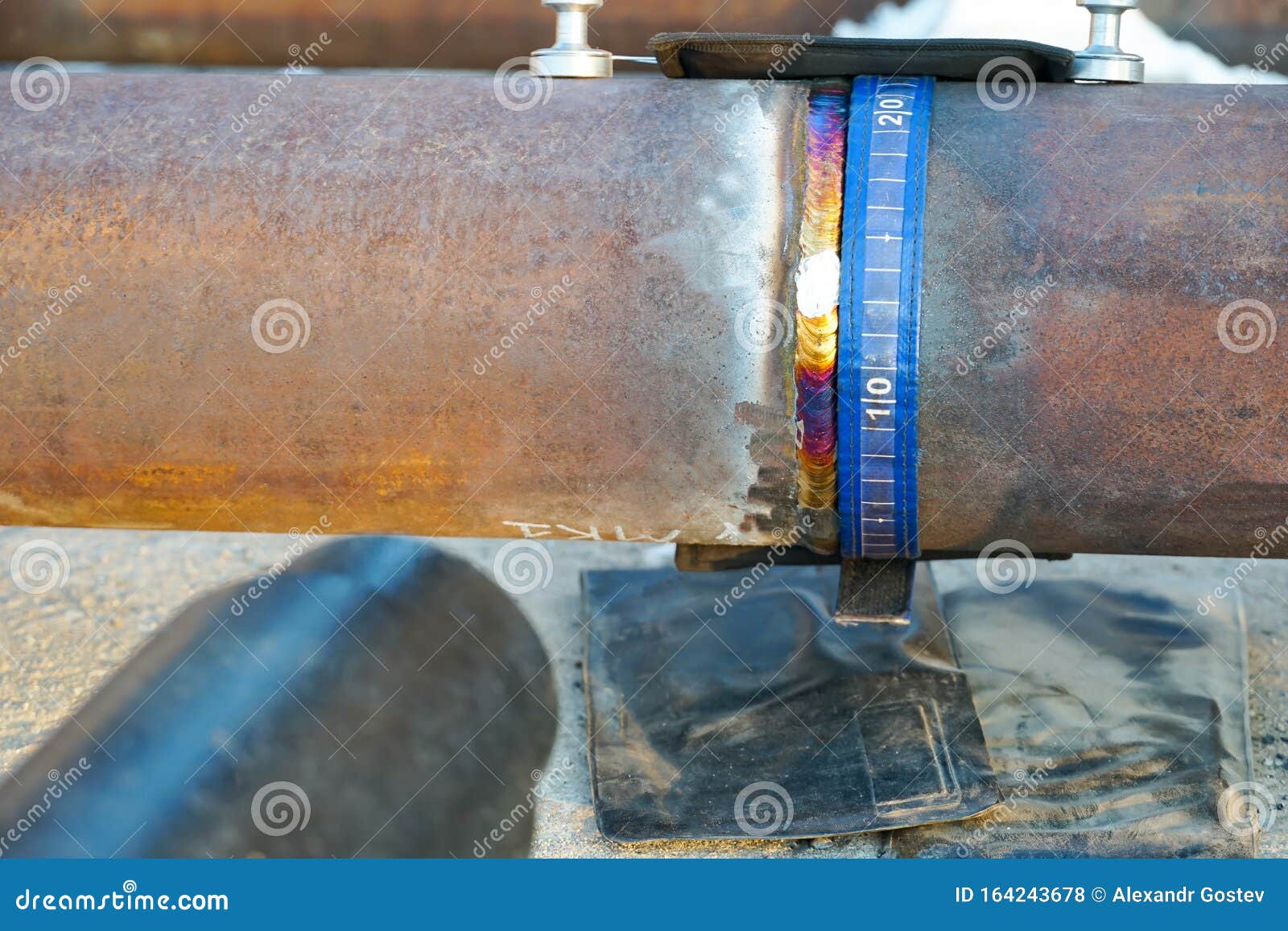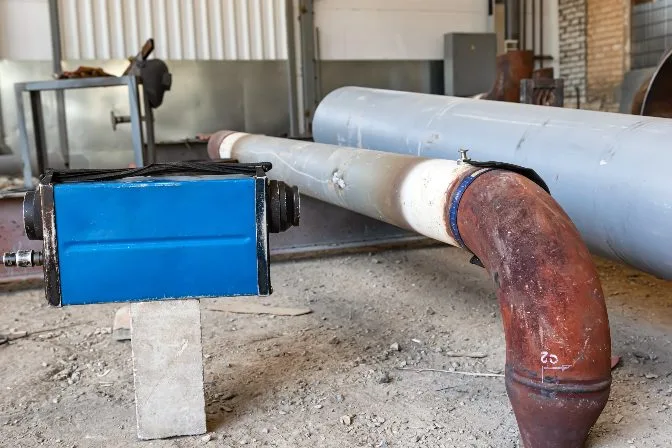Advanced Techniques in Pipe Welding Evaluation: Technologies and Technologies for Boosted Precision and Dependability in Weld Analysis
The landscape of pipeline welding inspection is undertaking a substantial change, driven by innovative methods that guarantee to enhance both precision and dependability in weld analyses. Advancements such as automatic evaluation systems and advanced imaging modern technologies are redefining typical techniques, while non-destructive testing approaches guarantee material honesty is maintained.

Relevance of Weld Inspection
Making sure the honesty of pipeline welds is crucial to the general security and dependability of industrial systems. Welds act as the architectural foundation of pipes, which deliver a selection of fluids under varying pressures. Defects in welding can lead to disastrous failings, leading to not just significant financial losses yet likewise potential ecological disasters and threats to public security. Therefore, rigorous assessment of welds is integral to the lifecycle of pipeline framework.
The significance of weld evaluation extends past simple compliance with regulatory criteria. It works as an aggressive action to identify and fix imperfections, such as insufficient combination, porosity, or splits, prior to they escalate right into significant problems. Efficient evaluation strategies additionally add to the longevity of pipes, decreasing upkeep costs and boosting operational performance.
Additionally, thorough weld examinations foster trust fund amongst stakeholders, consisting of governing bodies, capitalists, and the areas served by these pipelines. By guaranteeing that all welds meet the called for criteria, organizations can mitigate dangers and copyright their credibilities. In summary, weld examination is crucial not just for functional integrity however likewise for the broader implications it holds for safety and security and environmental stewardship.
Automated Inspection Solutions
The assimilation of computerized evaluation systems in pipe welding has actually revolutionized the technique to ensuring weld high quality and integrity. These systems utilize innovative robotics and expert system to perform evaluations that are not just faster but additionally much more constant than typical methods. Automated systems can cover considerable lengths of pipelines effectively, catching information that human inspectors might ignore as a result of fatigue or environmental conditions.
One of the crucial advantages of computerized inspection systems is their capacity to operate in unsafe environments, minimizing the threat to human assessors. They utilize different non-destructive testing (NDT) strategies, such as ultrasonic screening and magnetic fragment examination, to evaluate weld stability without endangering the structure. The information collected is refined in real-time, enabling prompt responses and prompt corrective actions when issues are recognized.
Additionally, automated systems assist in the standardization of evaluation procedures, making certain that each weld is examined against consistent criteria. This not just enhances the reliability of results however also simplifies compliance with regulatory standards. As industries remain to focus on security and functional efficiency, the function of automated assessment systems in pipe welding will undoubtedly increase, leading the way for a lot more sophisticated quality control techniques.
Advanced Imaging Technologies
Frequently employed in modern pipe welding evaluations, advanced imaging modern technologies have dramatically boosted the ability to find and examine weld issues. Methods such as digital radiography, calculated tomography, and thermographic imaging supply examiners with high-resolution images that disclose sub-surface defects and architectural inconsistencies that might be unseen to the nude eye.
This leads to quicker assessments and improved precision in recognizing crucial problems. Calculated tomography, on the other hand, supplies three-dimensional imaging, making it possible for examiners to envision complicated geometries and evaluate the honesty of welds from several angles.
Thermographic imaging employs infrared technology to identify variations in temperature level, determining areas of potential weak point or stress within the weld. These advanced imaging innovations not only boost defect detection rates but also lower the moment and sources required for pipeline assessments. Because of this, they play a vital duty in maintaining pipe safety and integrity, making certain conformity with sector criteria while decreasing operational dangers.
Non-Destructive Evaluating Methods
Making use of numerous techniques, non-destructive testing (NDT) approaches are vital in pipeline welding evaluations, enabling for the evaluation of weld integrity without compromising the material's structural stability. NDT incorporates a range of approaches, consisting of ultrasonic testing (UT), radiographic screening (RT), magnetic particle testing (MT), and color penetrant testing (PT) Each method has distinctive advantages and applications depending on the details demands of the examination.
Ultrasonic screening uses high-frequency audio waves to identify inner defects, giving specific measurements of click over here weld thickness and stability. Pipeline Welding Inspection. Radiographic screening uses X-rays or gamma rays to produce photos of the weld, exposing inner issues that might not show up on the surface. Magnetic bit testing is reliable for finding surface area and near-surface interruptions in ferromagnetic products, while dye penetrant testing highlights surface area fractures by utilizing a tinted dye
Integrating these NDT approaches into pipe welding examinations boosts the precision and reliability of weld analyses, guaranteeing that prospective failings are recognized early. As industries require greater standards for safety and security and efficiency, the duty of NDT in keeping the honesty of bonded structures remains to be crucial in look at this now pipe construction and maintenance.

Future Fads in Weld Evaluation
As we want to the future of weld assessment, improvements in technology are poised to transform the techniques used for reviewing pipe stability. The integration of man-made knowledge (AI) and artificial intelligence in assessment procedures is anticipated to enhance the precision of defect discovery and predictive upkeep. These technologies enable real-time data evaluation, allowing examiners to determine possible issues prior to they intensify right into substantial issues.
Additionally, using drones equipped with innovative imaging systems is obtaining grip. These aerial assessments can cover large locations swiftly, catching high-resolution images and information that can be assessed for problems in hard-to-reach places. This not just enhances security but likewise boosts effectiveness in the inspection procedure.
Additionally, the advancement of smart sensing units embedded in pipeline systems uses the potential for continuous monitoring. These sensing units can find modifications in pressure, temperature, and vibrations, offering important insights into the health and wellness of the welds over time.

Conclusion
In final thought, the integration of sophisticated methods in pipeline welding inspection significantly improves the accuracy and dependability of weld analyses. Advancements such as computerized inspection systems, progressed imaging modern technologies, and non-destructive testing methods play an essential duty in boosting problem detection rates and fostering positive upkeep methods. As these modern technologies proceed to advance, they will certainly even more guarantee the safety and performance of pipeline systems, inevitably adding to the integrity of critical facilities.

Comments on “Making Sure Sturdiness with Thorough Pipeline Welding Inspection”